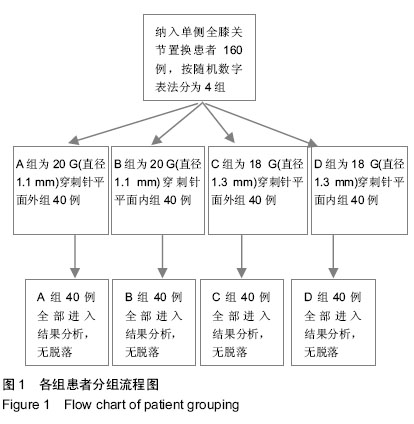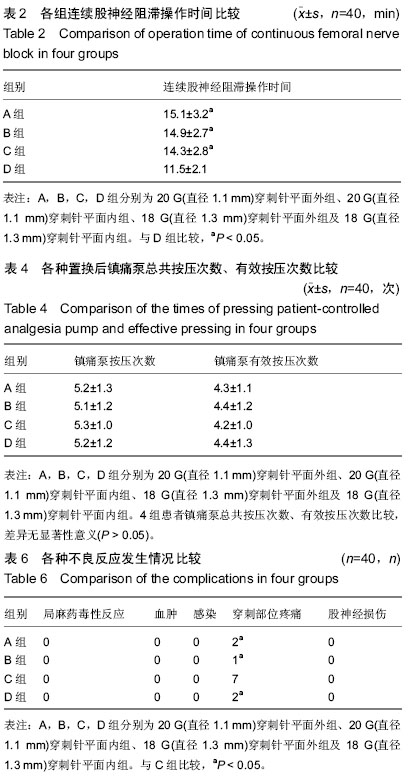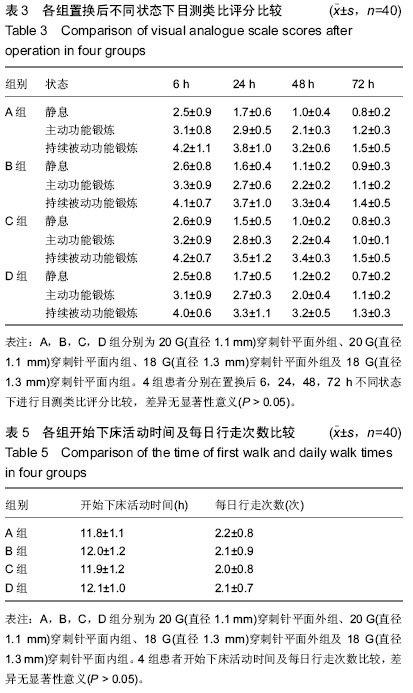中国组织工程研究 ›› 2015, Vol. 19 ›› Issue (13): 2005-2010.doi: 10.3969/j.issn.2095-4344.2015.13.008
• 人工假体 artificial prosthesis • 上一篇 下一篇
全膝关节置换后连续股神经阻滞镇痛:超声引导下的进针技术与穿刺针选择
汪 涛,何开华
- 重庆医科大学附属第一医院麻醉科,重庆市 400016
Continuous femoral nerve block after total knee arthroplasty: ultrasound-guided puncture techniques and needle choice
Wang Tao, He Kai-hua
- Department of Anesthesiology, the First Affiliated Hospital of Chongqing Medical University, Chongqing 400016, China
摘要:
背景:目前超声引导下连续股神经阻滞已在膝关节置换后镇痛中得到了广泛应用,但仍有一些操作的技术性及细节问题尚待研究。 目的:将超声引导下的连续股神经阻滞应用于全膝关节置换后镇痛,评价不同进针技术及不同直径穿刺针选择对超声显影效果的影响及安全性。 方法:纳入全膝关节置换患者160例,随机分为4组,每组40例。全麻诱导后行超声引导下股神经穿刺置管,A,B,C,D组分别为20 G(直径1.1 mm)穿刺针平面外组、20 G(直径1.1 mm)穿刺针平面内组、18 G(直径1.3 mm)穿刺针平面外组及18 G(直径1.3 mm)穿刺针平面内组。置换结束前30 min连接患者自控镇痛泵。记录连续股神经阻滞操作时间;记录各组患者置换后6,24,48,72 h静息、主动和持续被动功能训练时的目测类比疼痛评分,镇痛泵按压/有效按压次数;记录患者开始下床活动时间及每日行走次数;记录使用连续股神经阻滞期间的不良反应。 结果与结论:各组间连续股神经阻滞操作时间比较,D组操作时间短于A、B、C组(P < 0.05);各组患者置换后6,24,48,72 h静息、主动和持续被动功能训练时的目测类比疼痛评分,镇痛泵按压/有效按压次数,患者开始下床活动时间及每日行走次数差异无显著性意义;穿刺部位疼痛的发生率C组高于A、B、D组(P < 0.05)。提示超声引导的连续股神经阻滞应用于全膝关节置换后镇痛时,采用18 G针平面内进针技术能获得超声下最佳显影效果,并且不增加穿刺并发症。
中图分类号:



